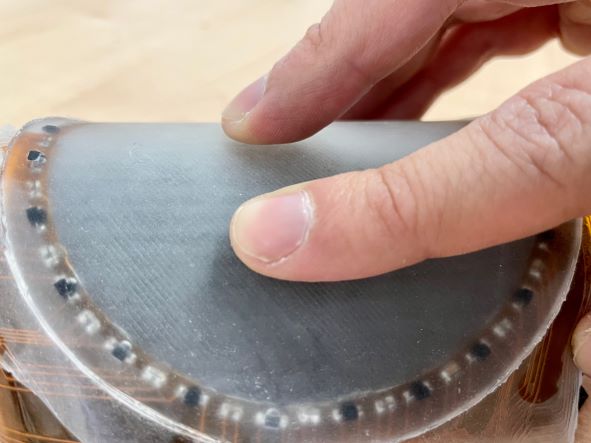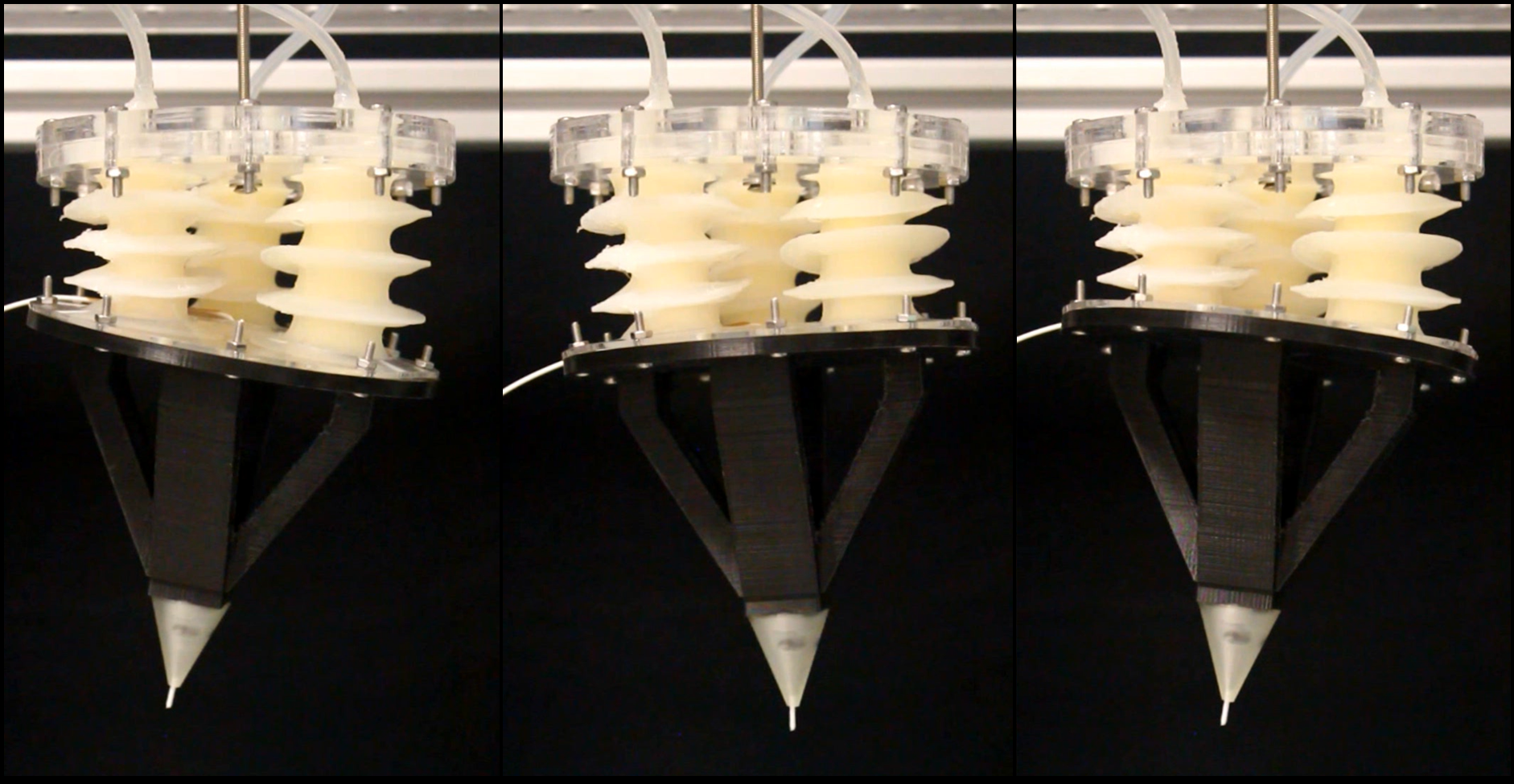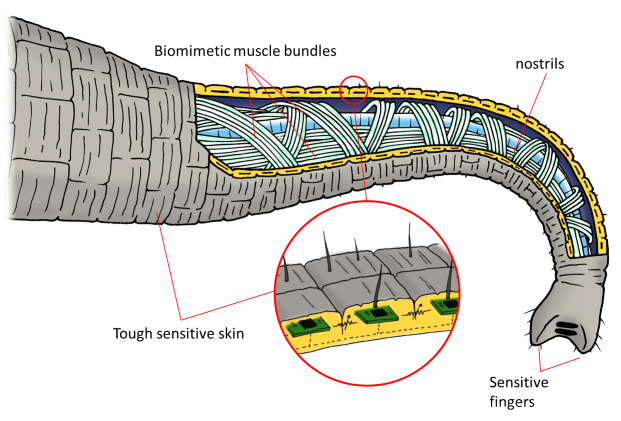The SBRP research is based on three major intertwined areas, outlined below with specific goals and highlights of the performed activities
BIOINSPIRED TACTILE SENSORS AND SKINS
GOAL: to develop new sensing technologies taking inspiration from natural models, as well as advanced artificial approaches for reliable, deformable sensing systems for soft robotics
Sensing organs are mechanically affected by natural environments (air, water soil) in ways that biomechanical principles can be extracted for artificial designs. Natural ‘armor skin’ models, like the elephant trunk skin, inspire us to develop mechanically robust, deformable, yet sensitive skin technologies for the real world. For the first time we started investigating the unique morphological/mechanical characteristics of such complex and corrugated skin and developed biomechanical models focusing on the skin’s micro/macrostructure, based on which new tough skin concepts will be generated.
On the viewpoint of purely artificial approaches, we investigated methods that will not burden (at mechanical and electric levels) the hosting deformable robots. All-optical methods were achieved by:
(i) a multitouch compliant soft waveguide skin (MSOWS) for pressure mapping in real-time;
(ii) highly stretchable soft sensors based on a new reflective coating to shield environmental light and that are selective for strain detection (not affected by pressure).

3D EMBODIED TRANSDUCTION&ACTUATION
GOAL: to achieve soft multidimensional movement and sensing in 3D to create intelligent building blocks for the future robots
We want to meet the technological challenge of full integration of touch and proprioception and their discrimination with movement, to actually create new building blocks for the future perceptive soft robots. Co-development of soft actuation and soft mechano-sensing is addressed with different approaches, including smart materials, architectures and 3D technologies. We focused on porous and architected matter to tackle multidimensionality in both movement and sensing. With commercial foams vacuum fluidic actuation was developed, also sensorized by inductive method. This led to collaborate to an EU proposal (Discover2Walk) on smart wearable devices for disabled children.
Concepts of printed 3D sensors with various architected materials are being investigated. These activities led to collaborate with Kasper Stoy (ITU Copenhagen) and Jamie Paik (EPFL) in a new EU funded project, MOZART (started Oct. 1, 2022) where poro-elastic smart surfaces will be investigated for manipulating food in industry.

BIOINSPIRED SOFT ROBOTIC SYSTEMS FOR ACTIVE TOUCH INVESTIGATIONS

GOAL: to investigate tactile-driven tasks in new versatile soft robotic platforms going beyond vision.
Touch sense is intimately linked to how an organism/robot moves and interacts with its environment, and on the mechanical and physical aspects of this interaction. New soft exploration and grasping platforms need to take more advantage of this symbiosis: could touch be prioritized to vision or other senses?
A new research area on elephant trunk-inspired robotics for conceiving new paradigms to versatile and sensitive manipulation, and started coordinating the FET-Open PROBOSCIS project. Among different aspects of the involved research, to mention is the major effort put on collaborating with zoologists/veterinarians and performing, for the first time, experiments with animals (at ZooSafari, Italy) having vision occluded to study the grasping strategies and quantify the interaction forces with instrumented objects.